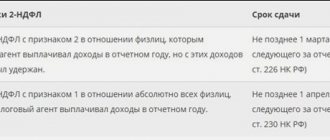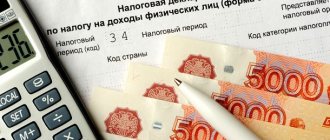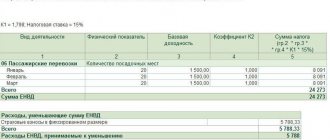Some buyers became tax agents
First of all, the latest news about changes to VAT in 2020 was brought by Federal Law No. 335-FZ of November 27, 2017 (hereinafter referred to as Law No. 335-FZ). According to it, from January 1, purchasers of a number of goods must perform the duties of tax agents for VAT. These changes apply to the VAT on scrap metal from 2020. And also (new clause 8 of Article 161 of the Tax Code of the Russian Federation):
- ferrous metal and non-ferrous metal waste;
- raw animal skins;
- secondary aluminum and its alloys.
Sales of these types of goods in Russia are no longer exempt from value added tax. That is, the buyer, as a tax agent, calculates VAT. An exception is made only for ordinary individuals who do not have individual entrepreneur status.
Let us recall that tax agents must calculate and transfer to the treasury the appropriate amount of VAT, regardless of whether they are responsible for paying this tax.
Tax agents on the general system (OSN), together with the tax calculation, can declare the corresponding deduction. That is, in fact, do not transfer money to the treasury.
Also see “How to calculate VAT”.
History of the formation of value added tax
In Russia, VAT was preceded by a “turnover tax” that was in effect for almost 70 years. One of the prerequisites for the emergence of a sales tax in the distant post-war period was an acute shortage of funds from the state treasury. It was very difficult for merchants under this taxation, because the tax was levied on all revenue, and not on net profit.
Value added tax came into force in Russia on January 1, 1992. However, other countries have long practiced this type of tax. The founder of the VAT is considered to be the French Director of the Ministry of Economy, Finance and Industry, Maurice Loret. The tax began testing in France in 1954. After positive tests, the project tax was found to be effective, and 4 years later, it was officially introduced into the taxation system.
When there is no right to deduct input VAT
Also, changes to VAT from January 1, 2020 affected recipients of subsidies and investments from the treasury. From this date, payers do not have the right to deduct input VAT on goods, works or services purchased at the expense of these government funds (new clause 2.1 of Article 170 of the Tax Code of the Russian Federation).
There is no right to deduct VAT even if the subsidy goes to the authorized capital of the enterprise.
In connection with this amendment, the tax restoration mechanism is spelled out in more detail, when the subsidy pays for the purchase price, but partially.
Also see “The most common VAT violations for 2020”.
Uniform VAT rate and exceptions for taxpayers
In the Russian tax system, value added tax is usually calculated at a standard rate of 18%. This rate is established by Tax Legislation, namely Chapter No. 21 called “value added tax” of Part II of the Tax Code of the Russian Federation dated August 5, 2000 No. 117-FZ. This Chapter contains 35 articles and regulates the characteristics of the tax in more detail.
There are 3 main rates of value added tax:
- The basic calculation rate is 18%. This rate is used to calculate the tax for most groups of goods.
- Rate 10%. We can say that such a rate is a kind of relaxation for entrepreneurs involved in the sale of:
- food;
- children's goods;
- medical supplies;
- scientific literature.
- Rate 0%. This rate mainly applies to export goods.
By the way, recently an amendment to the law was adopted that affected the activities of certain categories of participants in export transactions. Previously, taxpayers whose activities include the provision of railway rolling stock and containers for the transportation of goods for export could qualify for a 0% VAT rate only if they owned the above objects. So, since January 2020, this condition has lost its force, that is, the legislation has expanded the boundaries of this activity.
Entrepreneurs who provide work services to government agencies are exempt from VAT, that is, they have a 0% rate. The 0% rate also applies to the provision of services for the development of state-owned enterprises.
The tax is not levied on the sale of all types of space goods, as well as on the transportation of oil, gas and precious metals.
A more detailed list of goods, the sale of which is permitted at a 0% VAT rate, is presented in Article No. 164 of the Tax Code of the Russian Federation. In general, the legislation contains more than 100 points of relief for payers of this tax.
Zero VAT for re-export: conditions
Operations for the sale of goods exported as part of re-export were affected in 2020 by a change in the VAT rate to zero (Federal Law No. 350-FZ dated November 27, 2017, hereinafter referred to as Law No. 350-FZ). In this case, a mandatory condition of 0% VAT is if previously the goods (including processed products, waste, residues) underwent the following customs procedures (subclause 1, clause 1, article 164 of the Tax Code of the Russian Federation):
- processing in the customs territory;
- free customs zone;
- free warehouse.
Right to refuse zero VAT on exports
It has become possible to abandon the zero VAT rate for exports and related services - this is another new thing in the payment of VAT in 2020 thanks to Law No. 350-FZ (new edition of Article 164 of the Tax Code of the Russian Federation).
These changes give exporters the right to refuse the 0% VAT rate:
- directly when exporting goods;
- their transportation.
To do this, you need to submit a corresponding application to the tax office. The deadline is until the 1st day of the quarter from which the company wants to deduct VAT at a rate of 10 or 18%.
And you can’t:
- apply different rates to a product even when purchased by different people;
- selectively waive zero VAT on specific transactions.
In addition, if you refuse zero VAT, you can return to it only after 1 year.
The general meaning of these VAT amendments in 2020 is as follows:
- Export zero VAT is not easy to apply, since you need to prove your right to such a rate, otherwise the tax will have to be paid in the amount of 18% for the entire chain of counterparties;
- You can deduct VAT on invoices with VAT 18, not 0%.
Changes in VAT payment from 2020
Since the beginning of 2020, changes in tax payment have affected entities that receive subsidies from the state. They cannot use the opportunity to obtain a VAT deduction for goods, services, or purchases for which public funds were spent. This rule also applies to the financial increase in the capital of the enterprise. Organizations that receive subsidies must keep separate records of tax amounts.
A large number of taxpayers are concerned about how much VAT is payable to the budget on certain transactions. The applicable tax rate can vary from 0% to 18%, and now up to 20%. In order not to be confused in the situation, you should familiarize yourself with the exact list of goods and services that are given in the Tax Code. Prices for products and services will continue to rise, but this is not only due to an increase in the tax rate. There was no increase in rates for more than ten years, and prices in stores slowly but surely continued to increase.
Basic facts related to the price of goods and the VAT rate:
- The increase in the rate will not affect goods of social significance. These include the category of goods taxed at a rate of 10%. They were not affected by the changes. Also, the VAT rate for food products such as vegetables, flour, meat products, fish and others remains the same.
- The price of certain products does not include tax surcharge. That is, the product is not taxed, or entrepreneurs are completely exempt from paying the state contribution. But this will not affect the cost of products in any way. In addition to VAT included, the price of an item may increase due to an increase in store rent or a desire to generate more income.
- Expensive goods are at risk. For example, cars. Since there is a high markup on them, the retail price will become more noticeable for any wallet.
The best option to save your money is to purchase those goods and services that are subject to a reduced tax rate or do not include VAT at all. This tax is subject to mandatory payment in many foreign countries, not only in the Russian Federation. In some countries, VAT is set at a small rate, but the amount of insurance premiums or income tax is increased. In any case, tax is the main source of attracting funds to the federal treasury. Any state financially exists due to the payment of various taxes by its citizens.
Documents for zero VAT on parcels abroad
When exporting goods by mail, the zero VAT rate from 2018 allows the new law to be confirmed by payments (originals or copies) and a declaration in the CN 23 form:
In addition to payments, you can choose what to submit from 2 options (new sub-clause 7, clause 1, article 165 of the Tax Code of the Russian Federation):
- original or copy of the CN 23 declaration (with Russian customs marks);
- original or copy of the customs declaration (with Russian customs marks) and original or copy of the CN 23 declaration.
The point is that for 2020, a separate list of supporting documents for international postal parcels was not clearly stated in the Tax Code of the Russian Federation.
Positive changes in VAT in 2020 for legal entities are that when sending postal parcels abroad, a foreign trade contract is not needed to confirm 0% VAT (changes were made by Law No. 350-FZ).
Let us remind you that export VAT must be justified 180 calendar days after the start of this customs procedure. The documents are submitted along with the declaration for this tax.
Composition of reports generated upon import from the EAEU
The reporting created when importing from the EAEU countries is distinguished (clause 20 of section III of Appendix No. 18 to the Treaty on the EAEU):
- the emergence of a unique report form for this situation - an application for the import of goods (approved by the protocol “On the exchange of information in electronic form between the tax authorities of the EAEU member states...” dated December 11, 2009); application of a tax return of a special form KND 1151088 (approved by order of the Federal Tax Service of Russia dated September 27, 2017 No. SA-7-3 / [email protected] );
- the emergence of an obligation, together with the application and declaration, to submit documents confirming the payment of tax and information included in the application both in terms of data about the supplier and in relation to the calculation of VAT.
The specific set of supporting documents depends on the conditions under which the delivery is made. As a rule, these include a contract (supply or intermediary) and shipping documents. There may be an invoice and an information message containing information about the third party to the agreement, if there is such a party.
All documents forming EAEU-VAT reporting may be submitted to the tax authority both in paper form (confirming documents in certified copies) and electronically. The application, prepared on paper, must be executed in four copies, two of which, after the Federal Tax Service Inspectorate mark appears on them, should be sent to the foreign supplier.
The “five percent rule” has been clarified
Regarding VAT, new legislation in 2020 affects companies that have taxable and non-taxable transactions. Changes were made by Law No. 335-FZ.
Thus, clause 4 of Art. has been clarified. 170 of the Tax Code of the Russian Federation, which talks about the “five percent rule”. In particular:
- compliance with it allows you to deduct input VAT in its entirety, while from 01/01/2018 it is impossible not to maintain separate accounting;
- This rule does not apply when the goods are involved only in non-VAT-taxable transactions.
Innovations regarding transactions subject to VAT
In order to streamline VAT legislation, the government has taken steps to resolve the most controversial issues relating to transactions subject to value added tax:
- The right to waive the 0% VAT rate for organizations engaged in exports or providing related services is legally established. In practice, this will allow such exporting organizations to accept input tax as a deduction and eliminate the need to document their right to a zero rate, which previously caused great difficulties. The right to refuse is granted on application for 1 year. The application deadline is no later than the beginning of the 1st quarter of the year in which a tax rate other than zero will be used. The deadline for paying VAT and filing a declaration for such organizations is established according to generally accepted procedures.
- The government has clarified the list of transactions not subject to VAT and relating to services provided by airports in the Russian Federation. Previously, confusion reigned in this area, which led to numerous legal disputes with tax authorities. A clear designation of preferential activities will significantly streamline the payment of VAT in 2018 in this industry.
- Another innovation is the ban on deducting taxes paid from investment funds and budget subsidies. At the same time, buyers were required to keep separate records of such transactions. If the condition of separate accounting is met, an organization can offset VAT amounts paid from budget funds as expenses when calculating income tax.
Tax free law
For foreigners, changes in the payment of VAT from 2020 will be especially relevant. The fact is that Law No. 341-FZ dated November 27, 2017, finally introduced a tax-free mechanism in Russia on January 1. This is the right of foreigners (not from EAEU countries) to receive a VAT refund on purchases made in Russia (tax free).
Moreover, the new VAT refund system definitely does not apply to excisable goods. It is possible that the Russian Government will expand this stop list.
To receive a VAT refund, a foreigner must purchase goods worth at least 10,000 rubles within 24 hours. You can return the tax by bank transfer or in cash through the operator at the airport. This is regulated by the new Article 169.1 of the Tax Code of the Russian Federation.
It is important that sellers who participate in the tax free mechanism will be able to deduct VAT that was returned to foreign individuals. It is believed that this is a very beneficial system for the budget of our country.
But who can acquire the status of such a seller? To do this, you need to meet 3 mandatory conditions:
1. The enterprise (its division) is engaged in retail trade.
2. It deducts VAT.
3. Included in the special register of the Ministry of Industry and Trade of Russia.
And that's not it. The Government of the Russian Federation, by a separate resolution, establishes:
- locations of such trading firms;
- conditions that they must meet in order to be included in the tax free system.
At the request of a foreigner, you will have to issue a VAT refund check in one copy based on one or more cash receipts. There will be no mandatory tax free check form, but requirements for its mandatory details remain.
As a result, the tax will be returned to the seller on the basis of a tax free check with a customs mark on the export of the goods and provided that the VAT on it is compensated to the foreigner. The deduction is due to the seller within 1 year from the day when the foreigner is compensated for VAT.
Tax authorities do not have the right to refuse a deduction to the seller if there are inaccuracies in the tax free checks that do not interfere with identifying the information:
- about the retailer;
- the country that issued the foreigner’s passport;
- product name;
- VAT amount.
VAT, turnover and import volume, invoice in 2020
In the new Tax Code, the definition of value added tax payers remains unchanged. Registration for value added tax is carried out in accordance with Articles 82 and 83. For mandatory registration, the minimum turnover is 30,000 times the monthly calculation index.
Non-taxable turnover is supplemented by paragraph 3, turnover in the form of residual goods, which are goods listed in Article 394 of the Tax Code.
The following services have been added to the list of services for which the place of sale is recognized as the Republic of Kazakhstan:
- transfer of rights to use intellectual property;
- maintenance and software updates;
- providing access to Internet resources.
About the limit on the volume of turnover and imports
This chapter has been supplemented by a new article 381 “Features of determining the amount of taxable turnover in certain cases,” which describes the specific procedure for determining taxable turnover in cases other than the usual sale of goods, works, and services.
The amount of turnover for the acquisition of works and services from a non-resident is determined based on the cost of acquisition of works and services, including corporate or individual income tax subject to withholding at the source of payment. That is, the previously mentioned concept “including taxes” has been specified.
Value added tax not offset
The point where VAT was not subject to offset on invoices issued in non-compliance with the requirements was specified, namely:
- in the document that is the basis for offset, the identification number of the person who issued such a document and (or) the person to whom such a document was issued is not reflected or is incorrectly reflected;
— the invoice does not reflect data on the date the document was issued, the invoice number, the name of the product, work, service, or the amount of taxable turnover;
— the invoice is not certified in accordance with the requirements of Article 412 of this Code;
— the invoice was issued on paper in violation of the requirements of Article 412 of this Code.
The new Tax Code has a new article 403 “Exclusion from the amount of value added tax attributable to offset”, which describes in which cases the amount of value added tax is subject to exclusion from offset.
Also in this Code there are new articles that determine the calculation procedure:
— Article 406 “Value added tax attributable to offset, taking into account adjustments”
— Article 407 “Methods for determining the amount of value added tax allowed for offset”
— Article 408 “The procedure for determining the amounts of value added tax allowed for offset by the proportional method”
— Article 409 “The procedure for determining the amounts of value added tax allowed for credit through separate accounting”
— Article 410 “Procedure for determining the amount of value added tax allowed for offset by a value added tax payer carrying out the construction of a residential building” (part of a residential building)
— Article 411 “Additional amount of value added tax attributable to offset”
Invoice
Article 412 of the Tax Code expands the list of persons required to issue invoices for the sale of goods, works and services. In addition to VAT payers, the following persons are required to issue an invoice:
- taxpayers in cases provided for by regulatory legal acts of the Republic of Kazakhstan adopted for the purpose of implementing international treaties ratified by the Republic of Kazakhstan;
- a commission agent who is not a payer of value added tax, in the cases established by Article 416 of this Code;
- a forwarder who is not a payer of value added tax, in the cases established by Article 415 of this Code;
- taxpayers in case of sale of imported goods.
The Law of the Republic of Kazakhstan On the entry into force of the Code of the Republic of Kazakhstan “On taxes and other obligatory payments to the budget” (Tax Code) suspended paragraphs 1, 2, 3 and 4 of Article 412 of the Tax Code until January 1, 2020.
During the period of suspension, these paragraphs are valid in the wording established by Article 37 of the Law, according to which invoices in electronic form are required to be issued:
1) taxpayers in cases provided for by regulatory legal acts of the Republic of Kazakhstan adopted for the purpose of implementing international treaties ratified by the Republic of Kazakhstan;
2) taxpayers subject to tax monitoring;
3) taxpayers who, in accordance with the customs legislation of the Republic of Kazakhstan, are an authorized economic operator, customs representative, customs carrier, owner of temporary storage warehouses, owner of customs warehouses;
4) taxpayers carrying out international transportation of goods.
At the same time, the Code of the Republic of Kazakhstan “On Administrative Offenses” provides for administrative liability for the taxpayer’s failure to issue an invoice in electronic form in the form of a “warning”, and in case of repeated action, a fine is provided for small businesses in the amount of forty, for medium-sized businesses - in in the amount of one hundred, for large businesses - in the amount of one hundred and fifty monthly calculation indices.
Based on the results of explanatory seminars, round tables, as well as in connection with numerous requests from taxpayers engaged in international transportation, changes are currently being made to Article 412 of the Tax Code to remove the rule obliging small businesses to issue an invoice in electronic form. These changes will be introduced retrospectively from January 1, 2020.
Tax return
Changes have been made to the procedure for submitting registers of invoices purchased and sold during the tax period for goods, works and services that are submitted simultaneously with the declaration. So, according to the amendments made, if the payer of value added tax:
issues invoices in electronic form and on paper during the tax period, then in the register of invoices for goods, works, and services sold during the tax period, invoices issued on paper are reflected;
receives invoices in electronic form and on paper during the tax period, then in the register of invoices for goods, works, and services purchased during the tax period, invoices issued on paper are reflected.
If the payer of value added tax:
issues invoices exclusively in electronic form during the tax period, then the register of invoices for goods, works, and services sold during the tax period is not submitted to the tax authorities;
receives invoices exclusively in electronic form during the tax period, then the register of invoices for goods, works, and services purchased during the tax period is not submitted to the tax authorities.
In relations with the budget for VAT
Changes have been made to the procedure for returning excess VAT for turnover taxed at a zero rate. According to Article 429 of the Tax Code, the excess amount of value added tax is subject to refund in the part of the amount of tax offset on goods (works, services) used for the purposes of sales turnover, taxed at a zero rate, that is, no VAT refund is made on the balance of goods will. The provision of this paragraph does not apply to taxpayers entitled to apply a simplified procedure for the return of excess value added tax.
Also, to support export-oriented companies, the new Tax Code simplifies and optimizes VAT refund procedures, including:
from 2020
— the return period has been reduced to 30 working days for exporters issuing and receiving electronic invoices, as well as provided they are not classified as a risk zone (Article 431 of the new Tax Code);
(Under the previous Tax Code, the VAT refund deadlines in the generally established manner remain the same - 55 working days - the 0% rate is more than 70% and 155 calendar days - the 0% rate is less than 70%)
— Counter inspections of exporters' suppliers have been cancelled; in exchange, in case of violations of desk control, notices will be sent on desk control (Article 152 of the new Tax Code);
(Clause 8 of Article 635 of the previous Tax Code - during a tax audit for VAT refund from the budget, a mandatory counter-inspection is carried out on all suppliers for whom discrepancies are identified according to the Pyramid report).
— requirements for financial support by the management company and the imposition of responsibility on the participants of the FEZ are excluded (Article 389 of the new Tax Code);
(Article 244-2 of the previous Tax Code - confirmation of VAT amounts subject to return to the supplier of goods in the territory of the FEZ depends on the formation of financial support for the management company in the amount of at least 205,000 times the MCI (465.1 million tenge.)
from 2020
— refund periods have been reduced to 15 working days when taxpayers use a VAT control account on a voluntary basis;
(Article 433 of the new Tax Code - when using a VAT control account opened in second-tier banks for accounting for VAT, including for paying VAT to the budget, as well as in mutual settlements between buyers and suppliers for the supply of goods, taxpayers will be refunded debit VAT on purchased goods within the country to taxpayers who do not have turnover, taxed at the "0" rate. The list of goods is approved by the authorized body. When conducting audits, tax authorities will reconcile the chain of financial transactions according to VAT control accounts with the ESF IS, personal accounts of taxpayers, VAT return data according to calculated and paid amounts of VAT to the budget, which will allow the end consumer of the product to receive a guaranteed VAT refund within 15 working days. Exporters have the right to apply a similar procedure on a voluntary basis).
Credit method
To apply the payment of VAT using the offset method on the import of goods, the submission of a copy of the VAT registration certificate and the Obligation form to reflect the VAT amount in the VAT return (300.00) have been cancelled. In addition, it is clarified that deregistration for VAT after the release of goods before the expiration of 5 years from the date of release of goods (acceptance of goods for registration) is not a violation of the requirements for applying the payment of VAT using the offset method.
Exemption from VAT on the transfer of goods under financial leasing, on which VAT was paid by the offset method when importing from the EAEU in order to eliminate discrimination against goods transferred under financial leasing, imported from third countries and from the EAEU.
Application of a deferment for the payment of VAT on imports by authorized economic operators (AEO) on the 20th day of the third month following the month in which the imported goods were released for domestic consumption.
To confirm VAT at a zero rate when exporting goods to the territory of the EAEU, the submission of an application for the import of goods and payment of indirect taxes with a mark from the tax authority of a member state of the EAEU on paper has been canceled in connection with the receipt of such applications in electronic form.
When selling goods imported from the territory of the EAEU, an electronic invoice is issued no later than the 20th day of the month following the tax period.
State Revenue Department
in the South Kazakhstan region
The list of airport services will be established by the Government of the Russian Federation
As you know, there is no VAT on services provided directly at Russian airports and the airspace of our country for aircraft maintenance, including air navigation services (subclause 22, clause 2, article 149 of the Tax Code of the Russian Federation). But what exactly are these airport services? It seems that the long-standing confusion on this issue has come to an end.
Thus, Law No. 305-FZ dated October 30, 2017, with amendments to the Tax Code of the Russian Federation, says that from January 1, 2018, the list of airport services that are free of VAT is determined by a separate document by the Government of the Russian Federation.
Changes in air transportation and airport services
Subclause 22 of clause 2 of Article 149 of the Tax Code of the Russian Federation exempts from VAT aircraft maintenance services that are performed at airports and in Russian airspace. However, there is no indication of specific types of services in the Code. From January 1, 2020, the Government has the right to determine such services ; it must formalize their list in a separate document.
In addition, a zero VAT rate has been introduced for domestic air transportation of passengers and baggage in the Kaliningrad region since the beginning of this year.
No VAT when transferring target property in special economic zones
Based on the Law of November 27, 2017 No. 351-FZ, from January 1, 2018 there is no VAT on the free transfer to regional and municipal authorities of property created for the implementation of agreements on the creation of special economic zones - SEZ (Articles 146 and 170 of the Tax Code of the Russian Federation).
Example
A joint-stock company, 100% of the shares of which belongs to the Russian Federation, created within the SEZ, transfers property to companies created with its participation - SEZ management companies.
In addition, SEZ JSCs and management companies are no longer required to restore the amounts of VAT previously deducted on such property.
Application of the 5% rule
The so-called 5% rule applies to entities that carry out transactions both subject to and exempt from VAT. They must keep separate records of tax amounts to determine what portion of the VAT relates to taxable transactions and can be deducted, and what is subject to inclusion in the cost of goods because it relates to non-taxable activities. If in a tax period the share of costs for transactions not subject to VAT does not exceed 5% , the entire tax can be deducted.
The condition for applying the rule looks like this:
Expenses for the period on transactions not subject to VAT / Expenses for the period related to sales * 100% ≤ 5%
When this inequality is fulfilled, the entire VAT is deductible.
This was the case before, but the Tax Code allowed not to keep separate VAT records when the 5% rule was met. Now it is mandatory to keep separate records in any case . In addition, if a product is used only in non-taxable transactions, then the 5% rule does not apply to it.
In the absence of separate accounting, VAT can neither be deducted nor included in income tax expenses.










